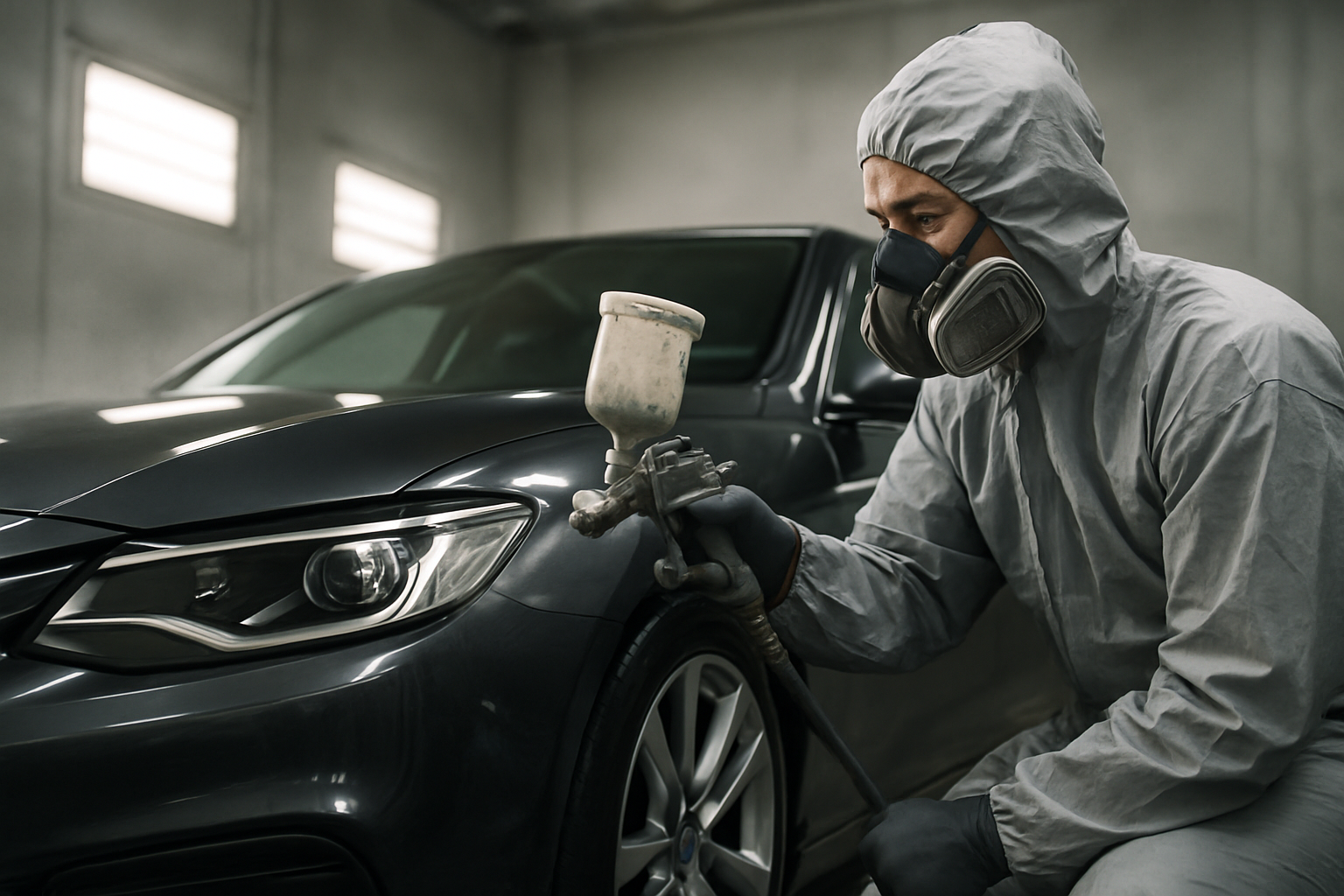The Hidden World of Automotive Paint: Beyond Color and Shine
Gliding through city streets or cruising down open highways, we're often captivated by the sleek, glossy finishes of passing vehicles. But beneath that shimmering exterior lies a complex world of chemistry, engineering, and artistry. Automotive paint is far more than just a cosmetic touch – it's a sophisticated system that protects, enhances, and even improves vehicle performance. Let's peel back the layers and explore the fascinating realm of automotive coatings.

In the 1920s, nitrocellulose lacquers revolutionized the industry, offering quicker drying times and a glossier finish. However, these lacquers were still far from perfect, requiring multiple coats and frequent polishing to maintain their shine. The post-World War II era saw the introduction of acrylic lacquers, which offered improved durability and color retention.
The 1960s brought another leap forward with the development of enamel paints. These provided better protection against the elements and required less maintenance. By the 1980s, two-stage urethane paints became the industry standard, offering superior durability, gloss retention, and resistance to environmental damage.
The Science Behind the Shine
Modern automotive paint is a marvel of chemical engineering. It’s not just one layer, but a complex system of coatings, each with a specific purpose. The typical paint job consists of four main layers:
-
Primer: This initial layer promotes adhesion and provides corrosion resistance.
-
Base coat: This is where the color comes from, often containing metallic flakes or pearl effects.
-
Clear coat: A transparent layer that provides gloss, depth, and protection against UV rays and environmental contaminants.
-
Nano-coat: An optional, ultra-thin layer that can provide additional protection and self-healing properties.
Each layer is carefully formulated to work in harmony with the others, creating a finish that’s not only beautiful but also functional. The chemistry behind these coatings is constantly evolving, with manufacturers seeking ways to improve durability, reduce environmental impact, and enhance application efficiency.
Beyond Aesthetics: Functional Coatings
While the primary purpose of automotive paint has traditionally been protection and aesthetics, modern coatings are pushing the boundaries of functionality. Researchers are developing paints that can do far more than just look good:
-
Self-healing paints: These coatings contain microcapsules filled with repair agents that are released when the paint is scratched, automatically filling in minor damage.
-
Temperature-regulating finishes: Some experimental coatings can change color based on temperature, potentially reducing the need for air conditioning in hot climates.
-
Energy-generating paint: Scientists are exploring the possibility of paint that can capture solar energy, potentially turning the entire vehicle body into a power generator.
-
Air-purifying coatings: Certain additives in paint can actively break down air pollutants, turning the vehicle’s surface into a mobile air purifier.
These innovations represent just the tip of the iceberg in terms of what future automotive coatings might be capable of.
The Art and Craft of Application
While much of automotive painting has been automated in large-scale production, there’s still a significant role for skilled human painters, especially in custom work and restorations. The application of automotive paint is a delicate balance of science and art, requiring a deep understanding of the materials and techniques involved.
Temperature, humidity, and dust control are critical factors in achieving a flawless finish. Professional painters must carefully control these variables while also mastering the nuances of spray techniques, color matching, and layering. The difference between a good paint job and a great one often comes down to the expertise and attention to detail of the painter.
Environmental Considerations and Future Trends
As with many aspects of the automotive industry, environmental concerns are driving significant changes in paint technology. Water-based paints are becoming increasingly common, reducing the emission of volatile organic compounds (VOCs) during the painting process. Some manufacturers are even exploring powder coating techniques, which eliminate liquid solvents entirely.
The future of automotive paint is likely to see a convergence of environmental sustainability, advanced functionality, and cutting-edge aesthetics. We may see coatings that can change color on demand, repair themselves instantly, or even communicate with other vehicles and infrastructure.
As vehicles evolve, so too will the coatings that protect and enhance them. The world of automotive paint, often overlooked by the average driver, continues to be a hotbed of innovation and creativity. From its humble beginnings in carriage varnishes to today’s high-tech, multi-functional coatings, automotive paint remains an essential and fascinating aspect of vehicle design and engineering.





